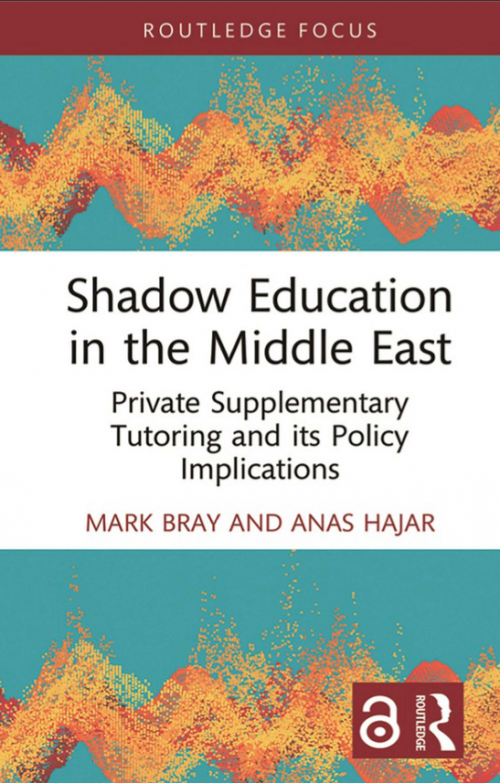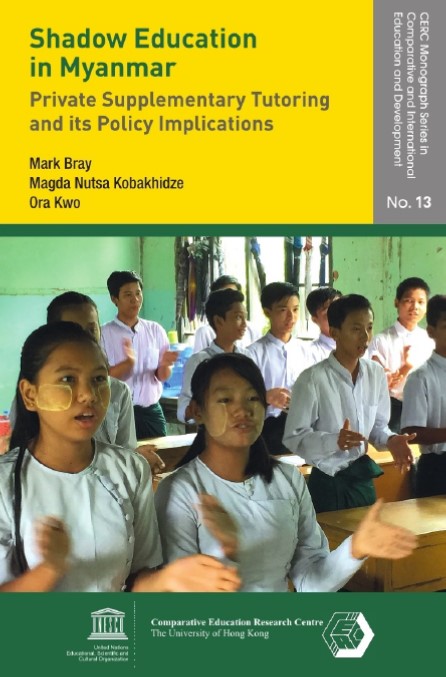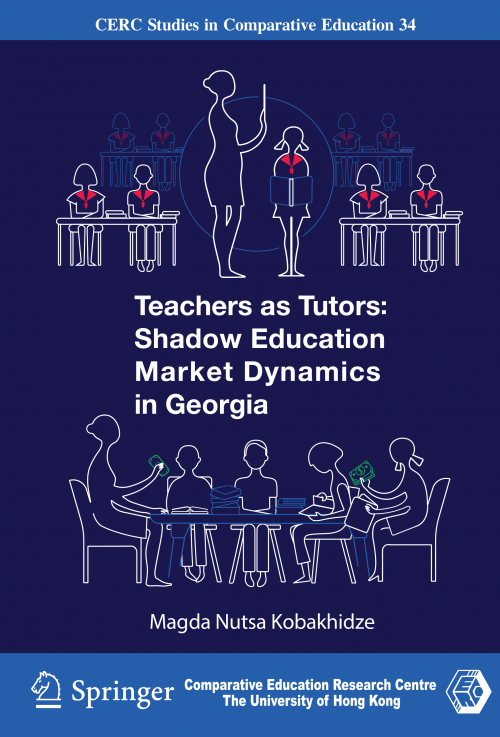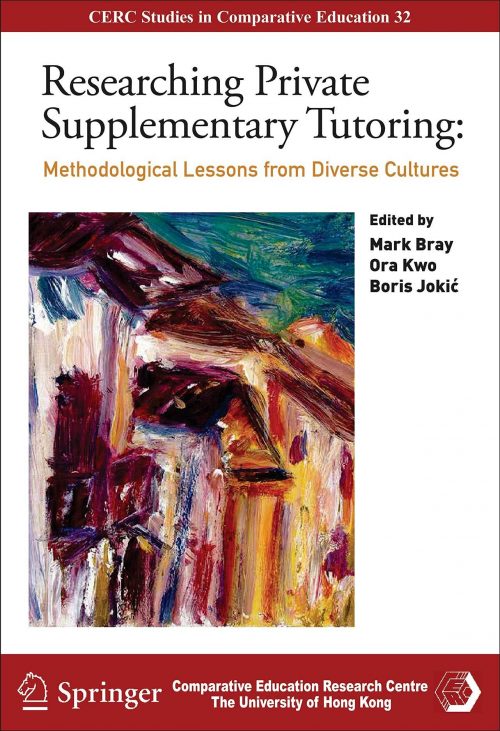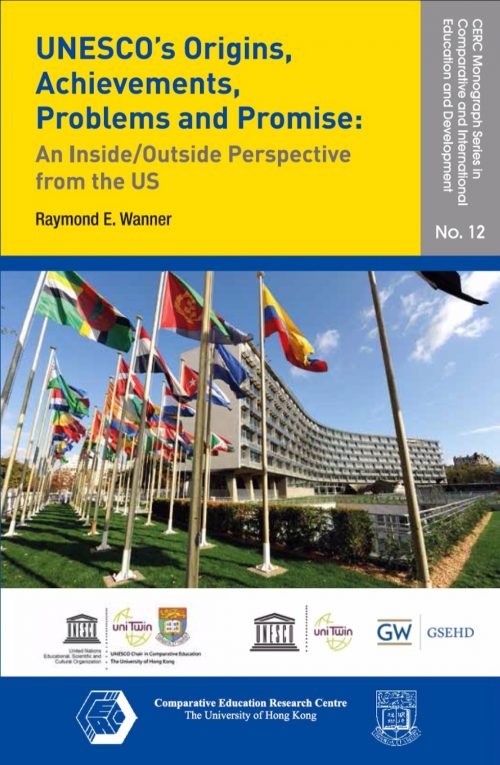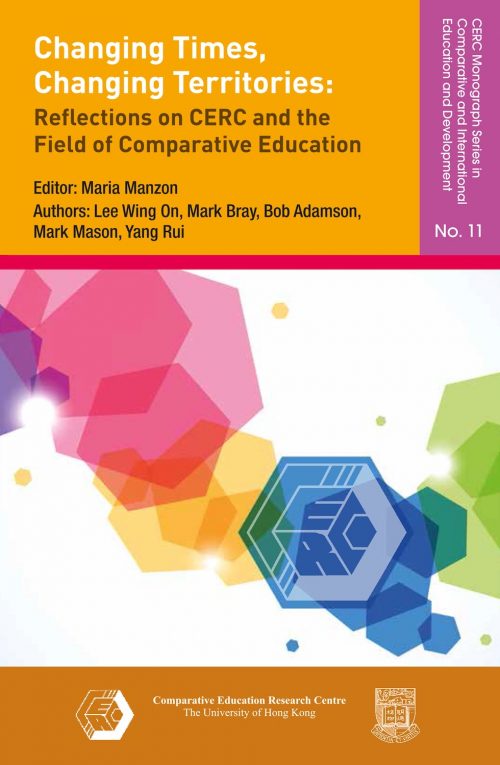Download the article:
 Academic-Praxis.2.1-18.Cobb-Cobb-Azizbekyan.pdf
Academic-Praxis.2.1-18.Cobb-Cobb-Azizbekyan.pdf
Since archaeology studies the full spectrum of the human past, it is naturally an academic discipline that engages a very wide range of topics – spanning the humanities, social sciences, physical sciences, and technology. Often, archaeological projects also take place in international settings, with team members joining from around the world. Therefore, archaeological fieldwork offers an ideal laboratory for experimenting with interdisciplinary learning in intercultural settings. Over the last several years, our project has engaged university students in a field research program either by hosting them in Armenia or through their remote contributions. Students have joined our project as volunteers or as part of official university courses in order to learn about archaeology and the digital humanities. Their experiences shed light on the learning context of archaeological field projects within an interdisciplinary and intercultural framework.
Archaeology and Learning in the Field
Archaeology is the study of the human past through the material remains people left behind. Archaeologists examine objects such as pottery vessels, stone tools, animal bones, and architecture in order to understand how people lived and how societies functioned. Ours is a situated science – you need to travel to the place you will investigate to work directly with tangible sites, objects, and entire landscapes. Archaeologists often venture far from their home to conduct fieldwork. The main methods deployed in the field include surface survey – walking through a landscape to look for new sites – and excavation – digging select sites to record where remnants of past societies were deposited. The combination of the labor-intensive work with the diversity of the evidence means that archaeologists must work as a team to deploy a wide range of skills and expertise.
Given the hands-on nature of this research, it has become cliché to say that ‘archaeologists learn everything in the field’. Indeed, the fieldwork context is just as important for training new archaeologists as it is for conducting research. Fieldwork, therefore, serves as complementary in a balanced educational program accompanied by reading-intensive study and classroom learning. Many university-level educational curricula now require students to attend ‘field-schools’, structured programs where the students will travel to live and work at an archaeological field project for a few weeks or months. During this time, students contribute to surveys and excavations while receiving detailed instruction and guidance. This can be considered a type of apprenticeship that aims to build skills for future career prospects (Aitchison, 2004; Cobb & Croucher, 2012). Such experiential field experiences are quite common in several academic disciplines, and they have been found to have significant benefits and potential drawbacks. For example, Munge et al. (2018:39) note the strengths of outdoor fieldwork in training related to “engagement, outreach, and professional competencies,” but also note weaknesses existing “in the areas of equity, logistics, and standards.”
In addition to their educational importance for students, field-schools often enable students to obtain unique personal experiences. Young students may travel away from home for the first time, meet new people from different cultures, and work intensively together with a team towards a shared goal. The social context and physical exertion of fieldwork may also lead to challenges such as safety, equity, and power imbalances (Peixotto et al., 2021). Given this dynamic and exciting context, the field-school is naturally a place where both intercultural and interdisciplinary learning takes place every day, simultaneous with a process of self-discovery.
Background of the Field Project in Armenia
Our first season of work in Armenia took place during the summer of 2018 with four students joining from the University of Pennsylvania. We returned to Armenia in 2019 to commence a new project called the Ararat Plain Southeast Archaeological Project (APSAP). This is a collaboration between the University of Hong Kong and the Institute of Archaeology and Ethnography of the National Academy of Sciences of the Republic of Armenia. APSAP’s goal is to understand past human life and mobility within and through the Vedi river valley, which is located along the southeastern edge of the Ararat plain. Each summer, we travel to Armenia to conduct surface survey throughout the valley, and we are undertaking a major excavation at the Vedi Fortress, the most prominent site in the valley.
Our project strives to bring together a team from around the world to create an intercultural learning environment. We particularly emphasize engaging more students from east Asia into the study of the ancient past of southwest Asia (the ancient Near East). During the 2019 season, undergraduate students traveled to Armenia to take part in the project as volunteers from Turkey, Armenia, the United States, Hong Kong, and Mainland China. We then planned to hold a field-school course through the University of Hong Kong (HKU) for the summer 2020 season as part of HKU’s experiential learning curriculum (Cheung, 2021). This course, within the Faculty of Education, is called BBED6796: Cultural Heritage and Information in the Field. Although it was offered in 2020, we were unable to travel to Armenia. As a result, Hong Kong students engaged remotely in digital humanities work to process data from the 2019 season. They were joined by two undergraduate students from the United States and a volunteer from the United Kingdom.
The field-school course was again offered in the summer of 2021 but again we could not travel. With a larger group of Hong Kong students than in the previous year, we undertook multiple digital projects including 3D modeling of ancient architecture, searching satellite imagery for potential sites, and creating pottery databases. The field director traveled to Armenia later in the summer to conduct some fieldwork with Armenian partners. We are planning for a much larger fieldwork season during the summer of 2022 that may include students from the United States, India, Armenia, Hong Kong, and Mainland China. Although the field-school course BBED6796 is being offered again at HKU, the students from Hong Kong registered in this course may choose not to travel. They will work instead on remote digital projects but will have opportunities to connect with other students in Armenia.
Interdisciplinary Learning
Archaeology is inherently an interdisciplinary pursuit as a result of the wide range of materials archaeologists collect and analyze. As archaeologists, we are compelled to examine all aspects of the human past, spanning a diversity of datatypes. We study the ways people used and moved through landscapes and how landscapes impacted human society, so we engage with geologists and geographers. Among the objects we find during excavation are animal bones and ancient seeds, so we look to specialists in biology and chemistry to help us determine what people ate in the past. Material scientists might assist us in studying the clays and other ingredients used to make pottery or mudbricks for houses. Historians guide us through the written records when they exist. We must analyze each of these datasets and combine them to understand the totality of past societies. Therefore, our archaeological field team hosts specialists from many disciplines and the students who join the field-school have exposure to all these topics. Our project particularly focuses on collaborating with research engineers who can help us to improve the ways we work, including collecting and analyzing digital data (Cobb et al., 2019). This type of interdisciplinary work provides significant opportunity for innovations in the humanities, including in our teaching (Ugolini, 2021). As Perry (2004, 239) posits, “authentic learning occurs when individuals, both students and professional archaeologists, form communities to address real archaeological questions, and to negotiate knowledge construction through meaningful social interactions.” The expansive horizon of archaeological research means that our students must navigate multiple academic fields and form extended communities and networks.
Rover (2002:369) highlighted the “integrative process or relationship” that occurs when multiple academic fields work together in interdisciplinary learning. Decades ago, Davis (1995) considered that learning would need to shift from purely focused on the acquisition of knowledge and facts to the creative application of these ideas in productive ways. He suggested that disciplines had become too focused to address broad challenges in society and therefore that structural changes would lead to more interdisciplinary teaching. In a book edited by Sim and Sim (2021), several essays discuss the possibilities and contributions afforded by interdisciplinary archaeological fieldwork in the exemplary educational system of Singapore. Within the context of Chinese archaeology, Ge (2021) emphasizes how the diversity of research materials in archaeology necessitates interdisciplinary study and thus advocates for cross-disciplinary learning for archaeological students in the Chinese curriculum. Similarly, Zhang (2020) highlights how cooperation across disciplines strengthens and develops archaeological research. Song (2020) notes that professional training for archaeologists must include training in other disciplines in order to support the advancement of the field as a whole, where archaeologists themselves become interdisciplinary. The type of collaboration that naturally occurs at an archaeological field-school like ours provides an opportunity for students to develop new perspectives and engage in meaningful thinking and innovation to meet various challenges (Repko & Szostak, 2017). At the same time, students can reflect on how archaeology complements other fields, learn how to communicate with multiple stakeholder groups, and integrate archaeology into other disciplines to create and explore new ways of thinking (Blouet, 2020).
The subfield of the digital humanities in particular offers an opportunity for interdisciplinary collaboration and learning in archaeology. Digital technology has found a place in enhancing the teaching of archaeology. Derudas and Berggren (2021) used interactive 3D models to introduce students to the methods and theories of archaeological excavation. Peuramaki-Brown et al. (2020:1) emphasize that all teaching methods should offer “engaging and accessible educational experiences” that touch on “social/emotional, teaching, and cognitive” presences. They propose a ‘grand challenge’ for archaeologists to research digital and remote teaching in order to improve our pedagogy, particularly for the situations where students cannot attend a field-school. Garstki et al. (2019) undertook an experiment where a classroom of students was introduced to excavation methods through a type of 3d animation projected on large screens. They found the ability to interact with life-scale models of past archaeological contexts useful for teaching about these concepts. At our project, we were forced to have students work only with digital data during the 2020 and 2021 field seasons due to travel restrictions. However, we found that students enjoyed developing new digital skills in 3D modeling, mapping, and database creation.
Archaeology is a destructive science since we must excavate and remove the data from the ground in order to record them. Therefore, it is imperative that we carefully record and share all information so that other scholars can evaluate our results. Like many archaeologists, we deploy a range of digital technologies to improve our data collection efforts in the field. When we undertake surface survey, we utilize global navigation satellite systems (GNSS) and a mobile phone app to geolocate each artifact or architectural remain we locate. Later, we upload these to geographic information systems (GIS) and relational databases to map and analyze the locations of sites in our landscape. We also use an aerial photography platform (drone) to photograph sites and landscapes. During excavation, we record all our data into a mobile phone database and create 3D models of each volume of dirt we remove from the ground. In the field lab we photograph, weigh, and 3D scan most of the artifacts we have found during survey or excavation. The students who join our field-school gain experience with all these different technologies.
In addition to deploying all the latest digital archaeological methods, our field project also serves as a laboratory for advancing technological innovations in archaeology. Specifically, we are focusing on improving our ability to collect significant quantities of data at both a high level of precision and within a small amount of time. Digging is a slow and laborious process that could benefit from mechanization and automation. We have formed partnerships with various research engineers in order to develop solutions to the challenges of fieldwork. At HKU, we are establishing a Student Interest Group (SIG) in the Innovation Wing of the Faculty of Engineering to attract engineering students to work with our project. Possible collaborations include improving 3d scanning of objects, experimenting with laser topographic mapping from drones, and working with augmented and virtual reality. We also hope to improve our ability to dig using robots or vacuums that can remove and filter the dirt quickly. After all, beyond just computer science, we can interact with many types of engineering. For example, Pérez-Mejía & Pierce (2014) review the roles that civil engineering specialists can play during the discovery and conservation of archaeological sites and remains. Our direct interaction with engineers means that we attract an interdisciplinary set of students to our project. Archaeology students can work together with engineering students to solve problems in the field (Cobb et al., 2019).
Intercultural Experiences
The interdisciplinary mode of learning explored above often takes place in situ at archaeological field projects. On-site fieldwork brings students to places far from their homes and introduces them to new cultures. Additionally, students from a variety of backgrounds live and work together in an intensive research environment, leading to many personal encounters. The students who join our archaeological field project co-inhabit houses owned by local Armenians in the peaceful rural villages of the Vedi river valley, especially the agricultural town of Urtsadzor. In some cases, Armenian hosts might continue living in the same household with the students. Everyone works closely together during intensive workdays that can last 10 hours. In their free time, the students socialize with each other and with their Armenian peers. The students joining us from multiple countries therefore gain significant exposure not only to local culture, including daily habits, food, religion, architecture, and social life, but also to the cultural traits of their peers. Ultimately, everyone involved must function successfully together as a team in order to conduct our scientific research. As Zutter and Grekul (2020:1) point out in their description of their experiment with community-integrated learning, “common goals, shared responsibilities, and open lines of correspondence are key to the success.”
During the 2019 summer field season, each member of our international team wrote a public blog post for the APSAP website (http://openarchaeology.org/armenia). Some of the students reflected on their intercultural experiences. For example, the HKU student Ms. Yadian Wang, from Mainland China, noted that “I didn’t realize this would be such an unforgettable memory” and “I am grateful about the village life with all the warm people here.”[i] In another blog post, the HKU undergraduate students Ms Jeannie Ko and Ms Eunice Lai observed that it was “special” that they could “cook by ourselves! We had an international team with members from different countries. Every meal was just like an international food fiesta with Armenian, Turkish, Chinese and American cuisine.”[ii]
Another poignant observation was offered by the Turkish student Ms. Eda Kesim. The countries of Turkey and Armenia have a long history of animosity and conflict that has led to challenges with the perceptions that their contemporary populations have about each other. In Ms. Kesim’s blog post she reflects on this as well as on her experiences during the visit: “Before I came to Armenia, I was a little worried about how people react to me. Now, I feel like at home! People are very kind and generous. I realized that we have similar cultures like foods, idioms, behaviors, etc.”[iii]
These positive experiences and reflections should be balanced against potential challenges and issues inherent in the intercultural field-school. First, of course, are language barriers, since the international students cannot converse with local Armenians who do not know English. In Armenia, many younger people speak English, but older people speak Russian, so this also complicates cross-generational interactions. During the 2019 field season, conversations around our dinner table took place in English, Armenian, Cantonese, Mandarin and Turkish. While this was an exciting environment to be part of and was often good naturedly remarked upon by the students, such language barriers may also lead to feelings of exclusion.
In addition, several students expressed feelings of homesickness that often centered around food. For example, Ms. Yadian Wang also wrote in her blog post: “One day, I was deeply homesick, missing my family and Chinese food so much. When back to the room, Ivi, my friend from the team, prepared the best brand instant noodles from HK, which made me almost cried at that moment.”[iv] A field-school can also be financially prohibitive and thus lead to limited diversity in terms of socio-economic status among the team members. Baxter (2016:16-17) notes the recent positioning of field-schools within consumer culture. In addition to travel and living expenses, students often lose income from summer jobs while they participate in archaeological fieldwork. Therefore, the significant resource allocation for field-schools often proves to be prohibitive for students coming from less privileged backgrounds.
Students who travel to Armenia not only learn about a new culture, but they are also exposed to a new natural environment. When our project hikes through the mountains to search for new sites during surface survey, we encounter a challenging landscape. Other archaeological teams in Armenia have had encounters with bears, and our team has seen several poisonous snakes. We also often hike on rugged and steep terrain that may be difficult or at least tiring for new team members to navigate. Thus, we must always make the students aware of animal and hiking safety guidelines. On the other hand, this introduction to nature has provided new opportunities to students, particularly those who grew up in the dense urban environment of Hong Kong. During the 2019 season, several HKU students learned how to climb trees for the first time.
On the whole, it is our contention that these intercultural experiences support an appreciation of local culture and the development of partnerships towards mutual understanding. In their experiments, Zutter and Grekul (2020:1) also note something similar: “We have found that collaborative partnerships and internships result in quality learning experiences that are not difficult to establish or maintain, and create strong alliances between students, universities, and community heritage institutions.” This impact on the community and on building relationships has a reciprocal impact on expanding the worldview of the students who participate in archaeological field-schools.
Conclusion
At the APSAP archaeological field project in Armenia, we have the dual goals of researching the past and teaching students about how we create knowledge. We hope this leads to a deeper appreciation of cultural heritage but also an understanding of the critical problems we face in understanding the human past. At the same time, the context of learning at our archaeological field-school provides additional important pedagogical benefits. By bringing together a diverse group of students and specialists from around the world, the students who travel to Armenia receive a unique intercultural experience. The written reflections of international students demonstrate the impact of these personal connections on their worldviews. The diversity of the team also spans many academic disciplines, as necessitated by the wide range of evidence we must analyze and interpret. Thus, the students who join our field-school also experience a deeply-interdisciplinary research and learning environment. Situated learning in the field provides an opportunity for students to explore their own motivations and ambitions. As Brickhouse (2001:286) observes, ‘‘learning is not merely a matter of acquiring knowledge, it is a matter of deciding what kind of person you are and want to be and engaging in those activities that make one a part of the relevant communities.’’
Acknowledgements
We would like to thank HKU Faculty of Education Master’s student Ms. Zihan Wang for her help with organizing the references for this paper and for interpreting the Chinese sources.
References
Blouet, H. (2020). Teaching interdisciplinary archaeology: Our students as our future agents of change.Advances in Archaeological Practice, 8(1), 15-24.
Baxter, J. A. (2016). Archaeological Field Schools: A Guide for Teaching in the Field. London: Routledge.
Brickhouse, N.W. (2001). Embodying science: A feminist perspective on learning. Journal of Research in Science Teaching, 38, 282–295.
Cobb, P. J., Sigmier, J. H., Creamer, P. M., & French, E. R. (2019). Collaborative approaches to archaeology programming and the increase of digital literacy among archaeology students. Open Archaeology, 5(1), 137-154. https://doi.org/10.1515/opar-2019-0010
Cheung, L. H. A. (2021). Experiential Learning in the University of Hong Kong. Academic Praxis, 1: 52-66.
Davis, J. R. (1995). Reengineering Teaching for 21st Century Learning. Educational Record, 76(4), 16-22.
Derudas, P., & Berggren, Å. (2021). Expanding field-archaeology education: The integration of 3D technology into archaeological training. Open Archaeology, 7(1), 556-573.
Garstki, K., Larkee, C.E., & LaDisa, J.F. (2019). A Role for Immersive Visualization Experiences in Teaching Archaeology. Studies in Digital Heritage, 3(1), 46-59. 10.14434/sdh.v3i1.25145.
Ge Wei. (2021). On the Paradigm of Archaeological Interdisciplinary Studies and New Arts Construction. New Arts Education Research, (03), 41-60+141-142.
Pérez-Mejía, A., & Pierce, C. E. (2014). Review of archaeological preservation and civil engineering professional practice. Journal of Professional Issues in Engineering Education and Practice, 140(1), 04013010.
Perry, J. (2004). “Authentic Learning in Field Schools: Preparing Future Members of the Archaeological Community.” World Archaeology, Jun., 2004, Vol. 36, No. 2, Archaeological Pedagogies (Jun., 2004), pp. 236-260.
Peuramaki-Brown, M. M., Morton, S. G., Seitsonen, O., Sims, C., & Blaine, D. (2020). Grand challenge No. 3: Digital archaeology technology-enabled learning in archaeology. Journal of Archaeology and Education, 4(3), 4.
Repko, A., & Szostak, R. (2017). Interdisciplinary Research: Process and Theory (3rd ed.).
Rover, D. T. (2002). Interdisciplinary Teaching and Learning: What, why, and how. Journal of Engineering Education, 91(4), 369.
Sim, T. Y., & Sim, H. H. (Eds.). (2021). Fieldwork in Humanities Education in Singapore. Springer Singapore.
Song Jiangning. (2020). Reflections on the nature of archaeology and the development of Chinese archaeology. Southern Cultural Relics, (06), 35-51.
Ugolini, B. (2021). Innovation and Liberal Arts Education. Academic Praxis, 1: 37-51.
Zhang Changping. (2020). Beyond the Classroom: Some Reflections on Teaching Archaeology to Postgraduate Students. Southern Cultural Relics, (04), 278-281.
To Cite This Article:
Cobb, P. J., Cobb, E., and Azizbekyan, H. (2022). Interdisciplinary Learning in an Intercultural Setting during Archaeological Fieldwork. Academic Praxis, 2: 1-18.
[i] http://openarchaeology.org/armenia/2019-blog03
[ii] http://openarchaeology.org/armenia/2019-blog05
[iii] http://openarchaeology.org/armenia/2019-blog02
[iv] http://openarchaeology.org/armenia/2019-blog03
Other Recent Articles
 Chinese Students Collaborating Across Cultures Does International Higher Education Benefit from Collaborations? International education is argued to create better opportunities for higher learning if university program designers engage both personal and collective agency in studies of foreign languages and societies (Oleksiyenko and Shchepetylnykova, 2021), and thus increase students’ chances for greater engagement with alternative learning styles and contexts (Li, 2014; Phuong-Mai, et al., 2005). Yet, achieving a highly efficient design for cross-cultural learning is a challenge when courses prioritise technical… Read more
Chinese Students Collaborating Across Cultures Does International Higher Education Benefit from Collaborations? International education is argued to create better opportunities for higher learning if university program designers engage both personal and collective agency in studies of foreign languages and societies (Oleksiyenko and Shchepetylnykova, 2021), and thus increase students’ chances for greater engagement with alternative learning styles and contexts (Li, 2014; Phuong-Mai, et al., 2005). Yet, achieving a highly efficient design for cross-cultural learning is a challenge when courses prioritise technical… Read more Ukrainian Academics in the Times of War On February 24, 2022, Russia launched a brutal full-scale war of aggression against Ukraine. Eight years after the invasion of the Crimea and Donbas, the Russian government acted on Vladimir Putin’s assertions that Ukraine is not (and should not be) a country – a view deeply ingrained in propaganda-addled Russian popular opinion, to attempt to obliterate the Ukrainian state and identity. The Russian army has been bombing Ukrainian cities, including residential areas, universities and schools.… Read more
Ukrainian Academics in the Times of War On February 24, 2022, Russia launched a brutal full-scale war of aggression against Ukraine. Eight years after the invasion of the Crimea and Donbas, the Russian government acted on Vladimir Putin’s assertions that Ukraine is not (and should not be) a country – a view deeply ingrained in propaganda-addled Russian popular opinion, to attempt to obliterate the Ukrainian state and identity. The Russian army has been bombing Ukrainian cities, including residential areas, universities and schools.… Read more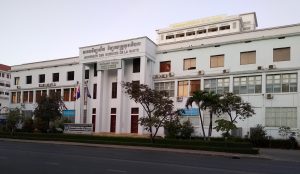 Higher education in Cambodia: Reforms for enhancing universities’ research capacities While Cambodian higher education is facing many challenges (see Heng et al., 2022a; Sol, 2021), the major issue that calls for reforms is a limited research capacity of Cambodian universities and academic staff. This problem needs immediate attention. Policy actions are required to improve the research landscape in the country and empower local academics for a more productive and impactful academic performance. In the following sections, I elaborate on my arguments Limited research output:… Read more
Higher education in Cambodia: Reforms for enhancing universities’ research capacities While Cambodian higher education is facing many challenges (see Heng et al., 2022a; Sol, 2021), the major issue that calls for reforms is a limited research capacity of Cambodian universities and academic staff. This problem needs immediate attention. Policy actions are required to improve the research landscape in the country and empower local academics for a more productive and impactful academic performance. In the following sections, I elaborate on my arguments Limited research output:… Read more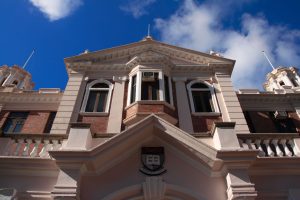 Experiential Learning at the University of Hong Kong Innovation in education always starts with an idea which gradually develops into on-the-ground practices, and can then spread to different areas in an education institute. In higher education, innovation can be demonstrated in various ways. While people might relate innovation naturally with the use of new and advanced technology, curriculum can also be an area where innovative ideas are applied. In fact, as scholars have highlighted, innovation aimed at transforming the curriculum was beneficial not… Read more
Experiential Learning at the University of Hong Kong Innovation in education always starts with an idea which gradually develops into on-the-ground practices, and can then spread to different areas in an education institute. In higher education, innovation can be demonstrated in various ways. While people might relate innovation naturally with the use of new and advanced technology, curriculum can also be an area where innovative ideas are applied. In fact, as scholars have highlighted, innovation aimed at transforming the curriculum was beneficial not… Read more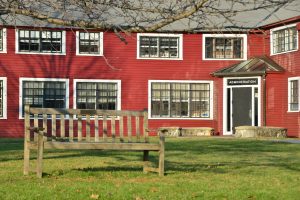 Innovation and Liberal Arts Education In the contemporary, globalized, neoliberal landscape of higher education, the increasingly intertwined relationship between government, industry, and universities is changing the nature and mission of higher education. The imperative of economic growth imposes new demands on the type of graduates that are needed to enter the workforce, and consequently on the priorities that universities should set. The call to innovate cannot be ignored if a university wishes to survive. Within the context of higher education,… Read more
Innovation and Liberal Arts Education In the contemporary, globalized, neoliberal landscape of higher education, the increasingly intertwined relationship between government, industry, and universities is changing the nature and mission of higher education. The imperative of economic growth imposes new demands on the type of graduates that are needed to enter the workforce, and consequently on the priorities that universities should set. The call to innovate cannot be ignored if a university wishes to survive. Within the context of higher education,… Read more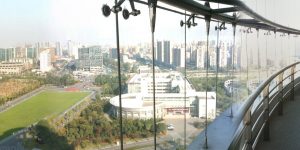 Conceptualization and Development of Global Competence in Higher Education: The Case of China The notion of global competence of students increasingly raises concerns among both educational researchers and practitioners. In 2018, the PISA tests assessed global competence of 15-year-old students for the first time (OECD, 2018). According to OECD, such a multidimensional capacity has been identified as the individual ability of examining “local, global and intercultural issues”, understanding and appreciating “different perspectives and world views”, interacting “successfully and respectfully with others, and taking “responsible action toward sustainability and… Read more
Conceptualization and Development of Global Competence in Higher Education: The Case of China The notion of global competence of students increasingly raises concerns among both educational researchers and practitioners. In 2018, the PISA tests assessed global competence of 15-year-old students for the first time (OECD, 2018). According to OECD, such a multidimensional capacity has been identified as the individual ability of examining “local, global and intercultural issues”, understanding and appreciating “different perspectives and world views”, interacting “successfully and respectfully with others, and taking “responsible action toward sustainability and… Read more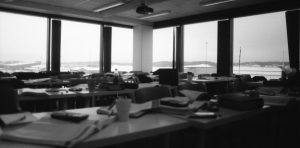 Quiet Leadership in Schools: A Personal Reflection This article argues for the importance of quiet, introverted leaders in international schools as a counterbalance to the extroverts who seem to make up the bulk of leadership posts in these institutions. It builds on essays by Liz Jackson (2021) and Bruce Macfarlane (2021), which explore leadership in university settings. These authors examine the de facto expectations of leaders to be outgoing and forceful, but challenge the idea of the heroic leader, suggesting that more… Read more
Quiet Leadership in Schools: A Personal Reflection This article argues for the importance of quiet, introverted leaders in international schools as a counterbalance to the extroverts who seem to make up the bulk of leadership posts in these institutions. It builds on essays by Liz Jackson (2021) and Bruce Macfarlane (2021), which explore leadership in university settings. These authors examine the de facto expectations of leaders to be outgoing and forceful, but challenge the idea of the heroic leader, suggesting that more… Read more Academic Praxis: An Editorial Note The recent special issue which I co-edited with my colleague, Liz Jackson, discussing dilemmas affecting the freedoms of speech, teaching and learning in the post-truth age (see Oleksiyenko and Jackson 2020), points to the importance of developing an academic praxis, in which each of us continually questions the purposes, processes and values of teaching, learning and inquiry. These days, I am increasingly inclined to think of higher learning as a journey of ceaseless introspection, which… Read more
Academic Praxis: An Editorial Note The recent special issue which I co-edited with my colleague, Liz Jackson, discussing dilemmas affecting the freedoms of speech, teaching and learning in the post-truth age (see Oleksiyenko and Jackson 2020), points to the importance of developing an academic praxis, in which each of us continually questions the purposes, processes and values of teaching, learning and inquiry. These days, I am increasingly inclined to think of higher learning as a journey of ceaseless introspection, which… Read more



